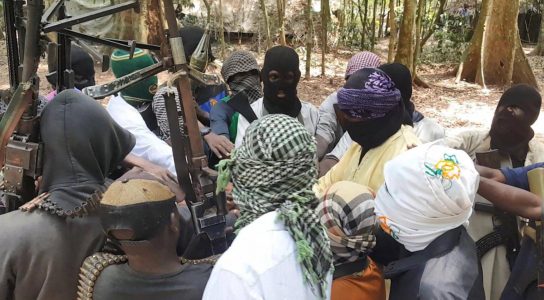
Islamic State affiliates are on the march in West Africa
Two Islamic State affiliates are advancing in West Africa. The group’s Sahel branch has resumed frequent attacks in Niger and Burkina Faso. In Nigeria, the Islamic State’s largest African affiliate is notching military victories near a key regional capital and expanding its operations along the Niger-Nigeria border. Meanwhile, al Shabaab (al Qaeda’s affiliate in Somalia) stepped up attacks on police and prison targets in the aftermath of political turmoil in the Somali capital.
The Salafi-jihadi movement, which includes al Qaeda and the Islamic State, is active across northern, eastern, and western Africa and is expanding and deepening its presence on the continent. This movement, like any insurgency, draws strength from access to vulnerable and aggrieved populations.
Converging trends, including failing states and regional instability, are creating favorable conditions for the Salafi-jihadi movement’s expansion. Meanwhile, counterterrorism efforts rely on the continued efforts of international coalitions, support for which is eroding, and on states and local authorities that have demonstrated an inability to govern effectively.
The Salafi-jihadi movement has spread rapidly in West Africa by exploiting ethnic grievances and state weaknesses that include human rights abuses, corruption, and ineffectiveness. An al Qaeda affiliate co-opted the 2012 Tuareg rebellion in Mali and has continued to expand southward through the Sahel region into central Mali and the peripheries of Burkina Faso. An Islamic State-linked group is active in the same area, particularly western Niger and parts of Burkina Faso.
Sahel groups have not yet plotted attacks outside West Africa but have sought to drive Western security and economic presence out of the region while building lucrative smuggling and kidnapping-for-ransom enterprises. An al Qaeda-linked group in Mali is infiltrating governance structures, advancing an overarching Salafi-jihadi objective, and expanding into Gulf of Guinea countries. West Africa has become an area of focus for transnational Salafi-jihadi organizations, with rival jihadists now fighting for dominance in the Sahel.
The Islamic State’s largest African affiliate is based in northwest Nigeria (Africa’s most populous country) and conducts frequent attacks into neighboring Cameroon, Chad, and Niger. Boko Haram and an al Qaeda-linked splinter group are also active in this region.
New instability in Chad, whose security forces are engaged in counterterrorism efforts in Mali and the Lake Chad basin, may lift pressure from Salafi-jihadi groups in both theaters.
Al Shabaab, an al Qaeda affiliate and the dominant Salafi-jihadi group in East Africa, is vocal about its intent to attack US interests and has begun to plot international terror attacks. The group enjoys de facto control over broad swathes of southern Somalia and can project power in the Somali federal capital Mogadishu and regional capitals, where it regularly attacks senior officials. It seeks to delegitimize and replace the weak Somali Federal Government – a task made easier by endemic political dysfunction, corruption, and an ongoing constitutional crisis. Al Shabaab’s governance ambitions extend to ethnic Somali populations in Kenya and Ethiopia, and the group conducts regular attacks in eastern Kenya.
Al Shabaab is positioned to benefit from eroding security conditions in East Africa. Ethiopia’s destabilization is already having regional effects, including weakening counter al Shabaab efforts in Somalia. The drawing down of the US and African Union counterterrorism missions in Somalia will also reduce pressure on al Shabaab.
The Islamic State has also penetrated the region. Islamic State branches are now active in northern Somalia, eastern Democratic Republic of the Congo, and northern Mozambique, bordering Tanzania. The insurgency caused French company Total to shutter a multibillion-dollar natural gas project in northern Mozambique that was the continent’s largest private investment. The Islamic State foothold in Mozambique also marks the Salafi-jihadi movement’s expansion into southern Africa.
Salafi-jihadi groups in North Africa are at a low point, but the fragility and grievances that led to their rise remain. The Arab Spring uprisings and subsequent security vacuums allowed Salafi-jihadi groups to organize and forge ties with desperate and coerced populations. The Islamic State’s rise brought a peak in Salafi-jihadi activity in North Africa, particularly from its branches in Libya and Egypt’s Sinai Peninsula. Counterterrorism pressure has weakened Salafi-jihadi groups across North Africa in the past five years.
The insurgencies in Libya and the Sinai are active but contained, and terrorist attacks across the region have decreased. Libya’s political and security crisis will continue to create opportunities for Salafi-jihadi groups, and severe instability or collapse in any North African state would likely bring the Salafi-jihadi threat back to the surface.
Source: Critical Threats





